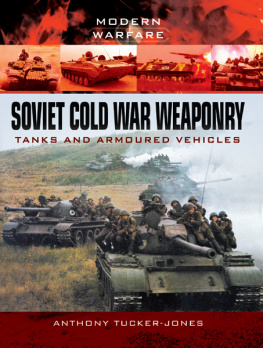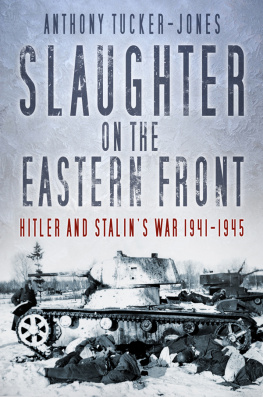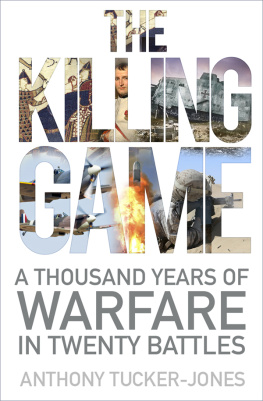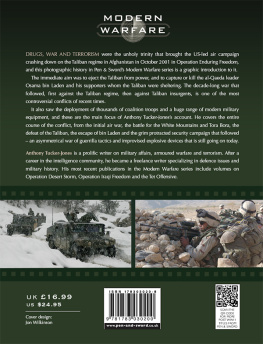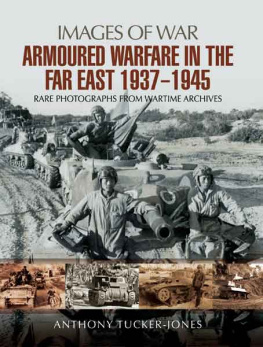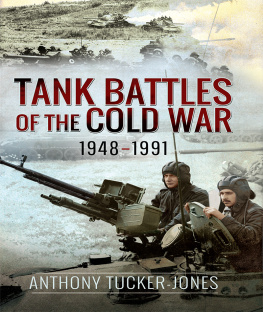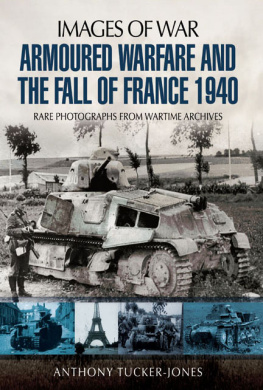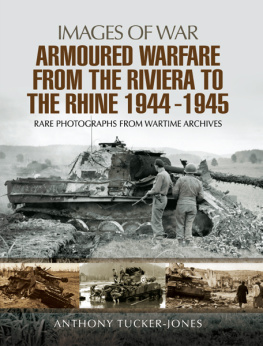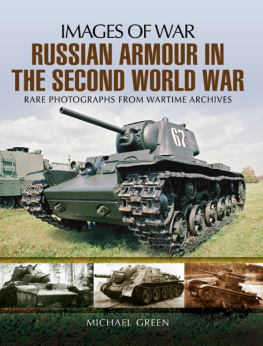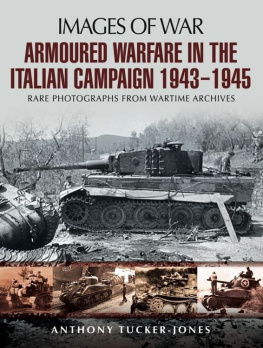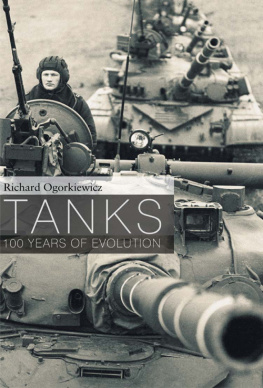Tucker-Jones - Soviet Cold War weaponry : tanks and armoured fighting vehicles
Here you can read online Tucker-Jones - Soviet Cold War weaponry : tanks and armoured fighting vehicles full text of the book (entire story) in english for free. Download pdf and epub, get meaning, cover and reviews about this ebook. year: 2015, publisher: Pen & Sword Military, genre: Romance novel. Description of the work, (preface) as well as reviews are available. Best literature library LitArk.com created for fans of good reading and offers a wide selection of genres:
Romance novel
Science fiction
Adventure
Detective
Science
History
Home and family
Prose
Art
Politics
Computer
Non-fiction
Religion
Business
Children
Humor
Choose a favorite category and find really read worthwhile books. Enjoy immersion in the world of imagination, feel the emotions of the characters or learn something new for yourself, make an fascinating discovery.
- Book:Soviet Cold War weaponry : tanks and armoured fighting vehicles
- Author:
- Publisher:Pen & Sword Military
- Genre:
- Year:2015
- Rating:5 / 5
- Favourites:Add to favourites
- Your mark:
- 100
- 1
- 2
- 3
- 4
- 5
Soviet Cold War weaponry : tanks and armoured fighting vehicles: summary, description and annotation
We offer to read an annotation, description, summary or preface (depends on what the author of the book "Soviet Cold War weaponry : tanks and armoured fighting vehicles" wrote himself). If you haven't found the necessary information about the book — write in the comments, we will try to find it.
Soviet Cold War weaponry : tanks and armoured fighting vehicles — read online for free the complete book (whole text) full work
Below is the text of the book, divided by pages. System saving the place of the last page read, allows you to conveniently read the book "Soviet Cold War weaponry : tanks and armoured fighting vehicles" online for free, without having to search again every time where you left off. Put a bookmark, and you can go to the page where you finished reading at any time.
Font size:
Interval:
Bookmark:

This Iraqi BMD-1 was destroyed in 2003 during Operation Iraqi Freedom. Iraq was only supplied a small number of these vehicles.
First published in Great Britain in 2015 by
PEN & SWORD MILITARY
an imprint of
Pen & Sword Books Ltd,
47 Church Street,
Barnsley,
South Yorkshire
S70 2AS
Text copyright Anthony Tucker-Jones 2015
Photographs copyright as credited 2015
ISBN: 978 178303 296 9
EPUB ISBN: 978 1 47386 274 6
PRC ISBN: 978 1 47386 273 9
The right of Anthony Tucker-Jones to be identified as Author of this Work
has been asserted by him in accordance with the Copyright, Designs and
Patents Act 1988.
A CIP record for this book is available from the British Library.
All rights reserved. No part of this book may be reproduced or transmitted
in any form or by any means, electronic or mechanical including
photocopying, recording or by any information storage and retrieval system,
without permission from the Publisher in writing.
Typeset by CHIC GRAPHICS
Printed and bound by Replika Press, India
Pen & Sword Books Ltd incorporates the imprints of Pen & Sword
Archaeology, Atlas, Aviation, Battleground, Discovery, Family History, History,
Maritime, Military, Naval, Politics, Railways, Select, Social History, Transport,
True Crime, Claymore Press, Frontline Books, Leo Cooper, Praetorian Press,
Remember When, Seaforth Publishing and Wharncliffe.
For a complete list of Pen & Sword titles please contact
Pen & Sword Books Limited
47 Church Street, Barnsley, South Yorkshire, S70 2AS, England
E-mail:
Website: www.pen-and-sword.co.uk
Contents
Preface:
Modern Warfare Series
P en & Swords Modern Warfare series is designed to provide a visual account of the defining conflicts of the late twentieth and early twenty-first centuries. These include Operations Desert Storm, Iraqi Freedom and Enduring Freedom. A key characteristic of all three, fought by coalitions, is what has been dubbed shock and awe, whereby superior technology, air supremacy and overwhelming firepower ensured complete freedom of manoeuvre on the ground in the face of a numerically stronger enemy. The focus of this series is to explain how military and political goals were achieved so swiftly and decisively.
Another aspect of modern warfare is that it is conducted in the full glare of the international media. This is a trend that first started during the Vietnam War and to this day every aspect of a conflict is visually recorded and scrutinised. Such visual reporting often shapes public perceptions of conflict to a far greater extent than politicians or indeed generals.
All the photos in this book, unless otherwise credited, were issued by the US Department of Defense at the time of the conflict. The author and the publishers are grateful for the work of the various forces combat photographers.
Introduction:
The Cold War
I t is difficult today to remember that at the height of the Cold War the possibility of Communist hordes pouring across Central Europe was a very real threat. For four decades Europe stood on the brink of the Third World War, thanks to the heavily-armed standoff between the North Atlantic Treaty Organisation (NATO) and the Warsaw Pact. Thankfully it was the war that never was. The Cold War became a historical footnote, sandwiched between the Second World War and the conflicts of the early twenty-first century. It is one of those intriguing what ifs? of history.
Washington never allowed its NATO allies to forget the extent of the Soviet threat. Annually throughout the 1980s the US Department of Defense published its Soviet Military Power, which catalogued Moscows strategic aspirations and its latest military developments. Anyone reading it was left feeling that war was imminent and woe betide NATO if it was not ready.
By the mid-1980s the Cold War was at its height, with a conventional and nuclear standoff across Europe divided by the Iron Curtain. As part of its forward defence Moscow deployed armies in Eastern Europe with the Group of Soviet Forces in Germany, the Northern Group in Poland, the Southern Group in Hungary and the Central Group in Czechoslovakia. This not only guarded against NATO but also ensured none of the other Warsaw Pact members could defect. These forces were used to stop a repeat of the anti-Soviet uprising in East Germany of 1953, the Hungarian Revolt of 1956 and the Prague Spring of 1968. The following year the Soviet armed forces were involved in a Sino-Soviet border conflict and in 1979 became embroiled in a ten-year struggle in Afghanistan.
After the Second World War with tensions mounting between the Western allies and the Soviets, Berlin remained divided between the American, British and French sectors that made up West Berlin and the Soviet sector that occupied the east. This resulted in the Soviet blockade of West Berlin from June 1948 to May 1949. In response the Allies organised the Berlin airlift and war in Europe was only narrowly avoided. However, the Cold War went hot around the world, most notably in 1950 with the conflict in Korea.
The Warsaw Pact of 1955 brought together eight communist states in Central and Eastern Europe. Moscow argued the pact was a defensive move in light of West Germany being allowed into NATO. The reality was that it bound Eastern Europes militaries to the Soviet armed forces. The Soviet Union was divided into military districts, with the key ones being the Baltic, Leningrad, Moscow and Kiev. By this stage the Soviet ground forces consisted of over 200 divisions, down from 500 at the end of the Second World War.
Not only did the Soviets have the numbers, they also had a vast array of weaponry. If there was one thing the Soviet Union was particularly good at it was building tanks. Since the mid-1950s Soviet-designed tanks dominated every single conflict right up until the 1991 Gulf War. Two designs in particular proved to be Moscows most reliable workhorses these are the T-54 and T-62 main battle tanks (MBTs). They are direct descendants of the Soviet Unions war-winning T-34 and Joseph Stalin tanks. They drew on the key characteristics of being easy to mass-produce, extremely robust and easy to use. As a result they were ideal for the less-well educated armies of the developing world. Having been inside a Czech-built T-54 I can testify that they are certainly no-frills tanks. The finish is not good and there are no creature comforts clearly a legacy from the Spartan conditions inside the T-34. Nonetheless, they did the job that was required of them.
The scale of Soviet armour manufacturing at its height was immense. The tank plant at Nizhniy Tagil was supported by at least three other key tank factories at Kharkov, Omsk and Chelyabinsk, while other armoured fighting vehicles (AFVs) were manufactured at seven different sites. In the 1980s the Soviets were producing approximately 9,000 tanks, self-propelled guns and armoured personnel carriers/infantry fighting vehicles (APCs/IFVs) a year. The Soviet Unions East European Warsaw Pact allies managed another 2,500.
Moscow sent almost 8,000 tanks and self-propelled guns and over 14,000 APCs/IFVs to the developing world during that decade alone. In effect they exported two and a half years worth of production. The Soviets ability to manufacture such vast numbers of tanks meant that on at least two occasions they were able to save Arab armies from complete disaster at the hands of the Israelis.
By the 1980s Moscow had a staggering 52,600 tanks and 59,000 APCs in its active inventory, with another 10,000 tanks and APCs in storage. After the Warsaw Pact force-reduction talks in Eastern Europe, in 1990 Moscow agreed to withdraw 10,000 tanks and destroy half of these without batting an eyelid. Warsaw Pact members also agreed to cut tank numbers by almost 3,000. At the same time the Soviets began to field newer tanks such as the T-64B, T-72M1 and the T-80, while retiring older-model T-54/55s and T-62s. They also improved their IFV forces by fielding large numbers of the tracked BMP-2 as well as improving the earlier BMP-1. The net result was a huge surplus of wheeled AFVs available to the developing world.
Next pageFont size:
Interval:
Bookmark:
Similar books «Soviet Cold War weaponry : tanks and armoured fighting vehicles»
Look at similar books to Soviet Cold War weaponry : tanks and armoured fighting vehicles. We have selected literature similar in name and meaning in the hope of providing readers with more options to find new, interesting, not yet read works.
Discussion, reviews of the book Soviet Cold War weaponry : tanks and armoured fighting vehicles and just readers' own opinions. Leave your comments, write what you think about the work, its meaning or the main characters. Specify what exactly you liked and what you didn't like, and why you think so.

